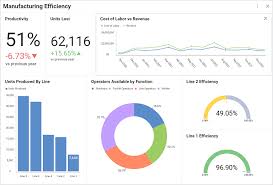The Power of Data Analysis in Business
Data analysis is a crucial tool for businesses looking to make informed decisions and gain a competitive edge in today’s data-driven world. By collecting, processing, and interpreting data, companies can uncover valuable insights that drive strategic planning, improve operational efficiency, and enhance overall performance.
Benefits of Data Analysis
One of the key benefits of data analysis is its ability to identify trends and patterns that may not be immediately apparent. By analysing large datasets, businesses can spot correlations, anomalies, and opportunities that can inform decision-making processes. This can lead to more targeted marketing campaigns, better resource allocation, and improved customer satisfaction.
Decision-Making
Data analysis also plays a crucial role in decision-making. By providing accurate and up-to-date information, businesses can make informed choices that are based on evidence rather than intuition. Whether it’s forecasting sales figures, identifying cost-saving opportunities, or predicting market trends, data analysis empowers businesses to make smarter decisions that drive success.
Improving Efficiency
Another advantage of data analysis is its ability to improve operational efficiency. By analysing processes and performance metrics, businesses can identify bottlenecks, streamline workflows, and eliminate inefficiencies. This not only saves time and resources but also enhances productivity and profitability in the long run.
Challenges of Data Analysis
While data analysis offers numerous benefits, it also comes with challenges. From collecting high-quality data to ensuring data security and privacy compliance, businesses need to navigate various obstacles to harness the full potential of data analysis. Additionally, interpreting complex datasets and deriving meaningful insights require specialised skills and tools.
Conclusion
In conclusion, data analysis is a powerful tool that empowers businesses to extract valuable insights from vast amounts of information. By leveraging the power of data analysis effectively, companies can drive growth, enhance decision-making processes, and stay ahead in today’s competitive business landscape.
Seven Essential Tips for Effective Data Analysis
- Ensure data quality by cleaning and verifying the accuracy of your dataset.
- Define clear objectives and questions to guide your analysis.
- Use appropriate visualisations to represent data effectively.
- Consider statistical techniques to analyse relationships and patterns in the data.
- Document your process and findings for future reference.
- Collaborate with colleagues to gain different perspectives on the data.
- Continuously update your skills and stay informed about new tools and techniques in data analysis.
Ensure data quality by cleaning and verifying the accuracy of your dataset.
To maximise the effectiveness of data analysis, it is crucial to ensure data quality by thoroughly cleaning and verifying the accuracy of your dataset. By removing any inconsistencies, errors, or duplicates in the data, you can enhance the reliability and integrity of your analysis results. Validating the accuracy of the dataset ensures that the insights derived from it are trustworthy and actionable, enabling informed decision-making and driving business success.
Define clear objectives and questions to guide your analysis.
To maximise the effectiveness of data analysis, it is essential to define clear objectives and formulate precise questions to guide the analysis process. By establishing specific goals and outlining the key questions that need to be answered, businesses can focus their efforts on extracting relevant insights from the data. This approach not only ensures that the analysis is targeted and purposeful but also helps in aligning the outcomes with the overarching business objectives. Clarity in objectives and questions serves as a roadmap for conducting meaningful data analysis that leads to actionable outcomes and informed decision-making.
Use appropriate visualisations to represent data effectively.
When conducting data analysis, it is essential to utilise appropriate visualisations to represent data effectively. Visual representations such as graphs, charts, and infographics can help convey complex information in a clear and concise manner, making it easier for stakeholders to understand and interpret the data. By choosing the right visualisation techniques based on the type of data being analysed, businesses can enhance communication, identify patterns and trends more efficiently, and make informed decisions that drive success.
Consider statistical techniques to analyse relationships and patterns in the data.
When delving into data analysis, it is essential to consider utilising statistical techniques to uncover relationships and patterns within the data. By applying statistical methods such as regression analysis, correlation tests, or clustering algorithms, businesses can gain deeper insights into how variables interact with each other and identify meaningful patterns that may influence decision-making processes. Statistical techniques provide a structured approach to analysing data, enabling businesses to make informed decisions based on robust evidence and empirical findings.
Document your process and findings for future reference.
Documenting your process and findings in data analysis is essential for future reference and continuous improvement. By keeping detailed records of the steps taken, methodologies used, and results obtained during the analysis, you create a valuable resource that can guide future projects, facilitate collaboration with team members, and ensure transparency in decision-making. Documenting your process also allows for easier replication of successful strategies and provides a historical record that can be referenced to track progress over time. In the fast-paced world of data analysis, thorough documentation serves as a roadmap for success and enables you to build upon past achievements effectively.
Collaborate with colleagues to gain different perspectives on the data.
Collaborating with colleagues to gain different perspectives on the data is a valuable tip in data analysis. By working together and sharing insights, team members can offer diverse viewpoints that may uncover new patterns or interpretations in the data. This collaborative approach not only enhances the depth of analysis but also fosters a culture of knowledge sharing and innovation within the team. Embracing varied perspectives can lead to more comprehensive and insightful conclusions, ultimately improving the quality and accuracy of data-driven decision-making processes.
Continuously update your skills and stay informed about new tools and techniques in data analysis.
It is essential to continuously update your skills and stay informed about new tools and techniques in data analysis to remain competitive in today’s rapidly evolving business landscape. By keeping abreast of the latest advancements in data analysis, you can enhance your capabilities, improve efficiency, and uncover valuable insights that drive strategic decision-making. Embracing lifelong learning and staying curious about emerging trends will not only sharpen your analytical skills but also position you as a valuable asset in leveraging data to achieve business success.






